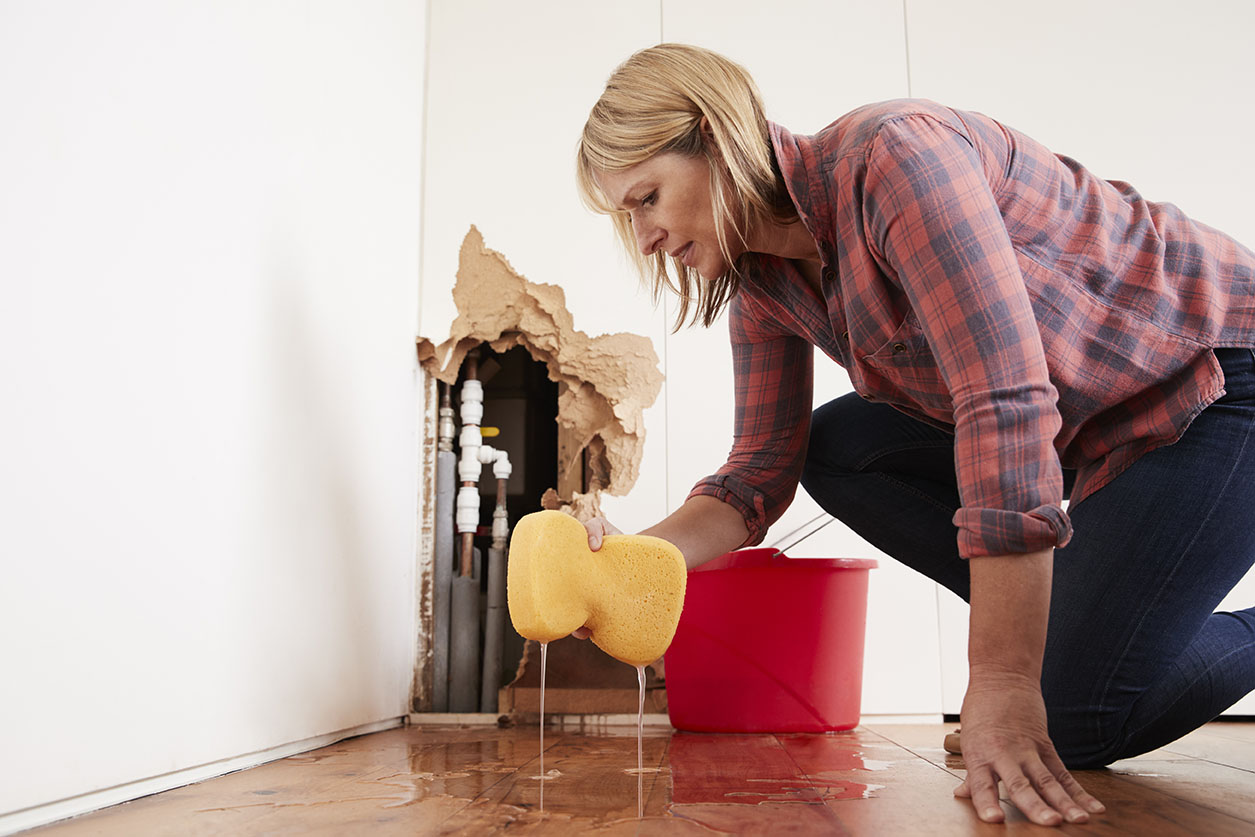PREVENTATIVE STEPS TO TAKE TO PROTECT YOUR HOME
Last year’s deep freeze caused issues for many of our neighbors which ranged from minor leaks to catastrophic damage. I am sure everyone has their fingers and toes crossed that we don’t have a repeat of that weather anytime soon. Below are some ideas to help everyone be more prepared.
Some people are saying that this is a once in a lifetime event, but I can assure you it isn’t. While the temperatures we experienced are rare this is the 3rd time since 1988, we have seen extremely low temperatures. The reality of the situation is that we could experience another deep freeze at any time. An occasional low temperature is not normally an issue, but problems occur when we hit below 20 degrees F for several consecutive days.
Some neighborhoods had 3 main areas of impact
- Fire Sprinklers systems – these are only in the newer homes built by Perry Homes
- Pipes leading to outside faucets in outside walls
- Waterpipes in unheated attics or garage ceilings
There are things you can all do to reduce your risk repeat of last February 2021.
If your house is going to be vacant for an extended period, you may want to consider turning off the water to the house. Everyone should have a water valve that allows you to do this. You can also turn water off at the meter but if you have fire sprinklers you should never turn your water off at the meter because it also turns off the water supply to the fire sprinklers.
If the water supply to the fire sprinklers is shutoff you could void your insurance coverage if there is a fire.
Water pipes in unheated areas/ Outside hose faucets
Typically, the heat from your living space in your house will help keep the attic warmer than the outside temperatures but there are limits. The difference is usually around 15-20 degrees in the winter, but differences can be larger during extreme cold weather. An inexpensive remote temperature sensor/alarm can help you keep an eye on your attic temperature – this is important if you have water pipes in the attic. Attics should be kept around 60 degrees F to avert pipes bursting.
Some of us have water regular water heater or tankless water heaters installed in the attic. The water heaters require pipes be installed in the attic to feed them water and distribute it after it is heated. If it gets cold enough the cold can impact the pipes running to the water heaters even if they are insulated. The suggestion of opening the attic stairs and cranking up the heat to the maximum worked for everyone who did this.
For those who have water heaters in the attic opening the stairs is the easiest solution but there are other solutions too:
- Install an electronic damper on one of your furnaces that would allow you to direct hot air from your furnace directly into the attic. You should consult a Heating and A/C specialist about this option.
- Seal and insulate the attic with foam – this also keeps the house cooler in the summer, but it is an expensive option
- Set up a recirculating loop that circulates hot water through you pipes in the attic.
If your water heater is in the garage, pipes may be in the ceiling or walls of the garage that can burst if they freeze. Pipes running to outside facets may also be located in unheated garages. A few things that can help are:
- Be sure your garage door is insulated. This can make a big difference in both summer and winter.
- Heat the garage in extremely cold weather. There are electric space heaters or panel heaters you can purchase that can keep you garage warmer. You don’t need to keep the garage as warm as the house but if you can maintain 40 degrees you should be good. When considering a heater keep in mind that most garages are about 400 sq ft. Use only am electric heater due to potential issues with carbon monoxide when using other heater fuels.
- Set up a recirculating loop that circulates hot water through the water pipes
The outside faucets are typically designed so they cannot freeze but for this feature to work it is critically important that there are no hoses are attached to the outside faucets. If a hose is connected it keeps water in the pipe which negates the anti-freeze technology. The pipes that burst leading to the faucet were not insulated very well or they were in unheated garages that got very cold. In addition to the above there are a few more things you can do to reduce the potential for freezing.
- Cover all outside faucets with foam faucet covers
- Install a shutoff valve on the water line that supplies the outside faucet. This should be place in a heated area because if you don’t do this the line could still freeze and the valve might not work. If you have a cutoff valve, be sure to leave the faucet open so any water in the pipe drains out.
- Install a pipe heating cable along water pipe leading to the outside faucet. This is basically a heating element that runs along the pipe to keep the water above freezing. This option may require you to open your dry wall to access the pipe.
Fire Sprinkler Systems.
These systems are more complex to deal with but there are several solutions. Last February we saw 3 types of issues.
- Backflow assemblies in garages ruptured because they are in unheated spaces, and many are on outside walls – this is the most common issue and causes the least damage.
- Pressurized drain lines burst, once again they are in outside walls in unheated spaces.
- Pipes in attics froze and burst, by far the most destructive.
There are a few things you can do when we have extreme weather.
- Heat the areas where the pipes and backflow assembly are exposed to cold air.
- Replace the water in the system with a special chemical that is designed not to freeze. This must be done by a professional company that is licensed to maintain fire sprinkler systems. (Glycol mixtures are typical)
- Drain the system of water. (NOT ADVISED) This disables your fire protection. Keep in mind should your insurance coverage may be void if you have a fire and it is determined your system was disabled. Also, this solution does not drain the water out of vertical pipes to which sprinkler heads are attached. The water in the vertical pipes in an attic can freeze which will cause the pipe to break and fall out of the ceiling.
- You could also just turn the water off at the backflow assembly. This could protect you from a large flood but again your fire protection is off. If you choose this option, before you turn the water back on be sure your pressure gauges are not lower than when you shut off the water. If the pressure drops, while the water is turned off, it usually means a pipe has ruptured.
- Consider buying a small flat panel ceramic heater and thermal switch that you can attach to the inside of the door that encloses your backflow assembly. This will keep the backflow assembly and valves from freezing if installed correctly.
- Regardless of what you do, you should have the “T” tool that is made to turn off the water at your water meter or if you don’t have one you should at least know several people who do have the tool in case you need help. These are available from local big box retail stores for around $10.
Installing water leak sensors is also a good idea. They are inexpensive and can alert you as soon as a leak is detected.
The Backflow assemblies do have a flow sensor which can be hooked up to any alarm system. If water flows through the fire sprinkler systems for any reason it will set of the alarm even if there is no fire.
Below is a link to the panel heater I mentioned. This can be mounted on the backflow assembly door if it is large enough. There may are other models available at different price points.
https://www.amazon.com/gp/product/B08J7Y1T2S/ref=ppx_yo_dt_b_asin_title_o00_s00?ie=UTF8&psc=1
The following link is for a thermal switch that will also sound and alarm and send a message to your smart phone. You can connect a heater to the device or just use it to send you temperature information.
https://www.amazon.com/gp/product/B07K8MBLSQ/ref=ox_sc_act_title_1?smid=A1RUFFFCQ74BCW&psc=1
The link below is for a space heater that could be used in a garage.
Next link is for water leak detectors:
There are many sources other than Amazon for the above items including Home Depot and Lowes.
Hope this is helpful to all and let’s hope for a winter milder than 2021.
Best,
ARIEL Inspection.

